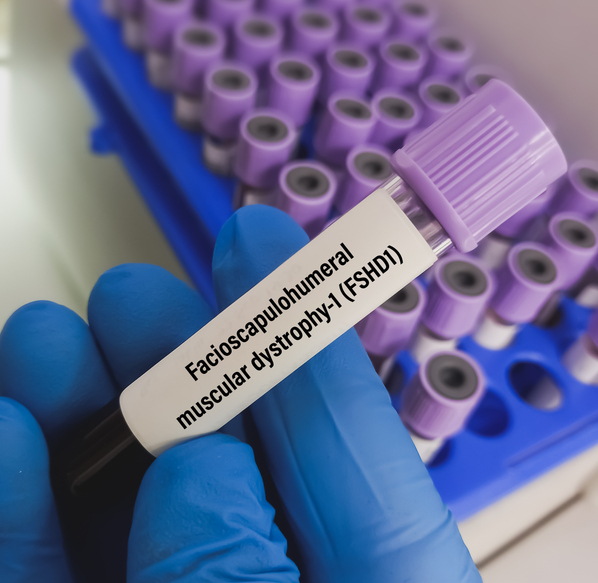Dr. Richard D'Souza Discusses a Novel Treatment for Parkinson's Disease
By Rob Dillard - Last Updated: April 27, 2023Recently, Amneal Pharmaceuticals announced that the FDA has accepted for review the New Drug Application (NDA) for IPX203 for the treatment of Parkinson’s disease (PD). IPX203 has been assigned a Prescription Drug User Fee Act (PDUFA) action date of June 30, 2023.
PD has become the fastest growing neurological disorder worldwide, with approximately 1 million people diagnosed in the United States. Carbidopa/levodopa (CD/LD) has been the leading treatment for PD since the 1970s. Data from the pivotal Phase 3 RISE-PD clinical trial illustrated that IPX203 – a novel, oral formulation of carbidopa/levodopa (CD/LD) extended-release capsules – offers superior “Good On” time, as well as significantly less “Off” time, compared to immediate-release CD/LD, even when dosed less frequently. This could mean longer duration of symptom control with the benefit of less frequent dosing, allowing people living with PD to live their lives with fewer concerns about their symptoms or mobility.
DocWire News spoke with Richard D’Souza, PhD, SVP, R&D for the Specialty Segment of Amneal who shared more details on Amneal’s recent NDA submission for IPX-203 and the supportive data used in the filing.
DocWire News: Can you provide us with some background on yourself?
Dr. Richard D’Souza: Yeah. My name is Richard D’Souza, and I have a PhD in clinical pharmacology. I’ve been in the industry for more than 35 years, worked at Pfizer, Johnson & Johnson, Bausch & Lomb, and I’ve been with Amneal for about four years.
Cases of Parkinson’s Disease (PD) are on the rise worldwide. Why is that?
That’s mainly connected to demographics. It’s a disease that you see more of as people get older, and therefore you’re seeing more of it.
Traditionally, what are the challenges of treating PD?
Parkinson’s disease is a disease where a certain part of the brain is not working. So, in that part of the brain that makes dopamine, those dopamine generating neurons don’t work and therefore you have a deficiency in dopamine. So, the intuitive answer is if you give dopamine, can you help the disease? And you can, except, you cannot give dopamine in a way that goes straight to the brain because it doesn’t cross the blood-brain barrier. And therefore, about 50 years ago levodopa was invented and it was given with Carbidopa to help it, so that you get less side effects and it last a little longer. And that drug was called Sinemet, it’s immediate-release carbidopa levodopa, and I’ll call it CD-LD.
And that works quite well in the initial stages, but as the disease progresses, you have peaks and valleys of blood levels of levodopa, and actually it doesn’t work so well after a while because when it’s at its peak, you sometimes get too much drug and therefore you have side effects. When it’s at its trough, you get two little drug and therefore you get the effects of Parkinson’s disease, which includes tremors and a number of things.
Talk to us about IPX203, a novel treatment for PD. How does it work?
Yeah, IPX203 is designed to address exactly the issue with immediate-release carbidopa levodopa, which is, you get peaks and valleys. And IPX203, let me start with the formulation. The formulation’s actually quite elegant and quite simple. It has two components. One is an immediate-release component so that you get the fast efficacy, it’s absorbed fast into the body, and you get immediate efficacy. And then a slower component where you want to release levodopa in a very steady fashion, kind of like the body releases levodopa, without peaks and valleys. And if you can go for a long time, then you control symptoms effectively without getting side effects. So, this is designed to be given approximately every eight hours so that it controls symptoms and doesn’t give you the side effect of dyskinesia and other side effects.
What efficacy back the drug’s efficacy?
We started development more than five years ago, and we started with Phase 1 pharmacokinetic studies to kind of understand how the drug is absorbed in the body and at what rate and how long it lasts. Then we did Phase 2 studies. We did Phase 2 study versus Rytary, and we showed that it was longer lasting than Rytary in terms of its pharmacokinetic profile, and it was superior to Rytary from a pharmacodynamic point of view. Then we did multiple dose studies to compare IPX203 with IR, and once again, we showed that it was vastly superior to IR CD-LD.
We then did pivotal studies, Phase 3 studies, and this was required for approval. One was a efficacy study with about 500 patients, and the other one was a safety study, which is we gave it in an open-label fashion to patients for nine months, to see what the effect was and what the side effect profile was. So, those are the studies that supported the registration. In addition to that, we did three Phase 3 studies to understand things like effect of food, dose proportionality, et cetera.
What key takeaways do you want to leave our audience with today?
I believe that IPX203, once approved, will be the best oral CD-LD drug on the market. In terms of the efficacy, we have shown in our Phase 3 studies that it is superior to immediate-release carbidopa levodopa, even when it’s only given three times a day, and when immediate-release is given five times a day. We have shown on a per-dose basis that it lasts 1.6 hours longer than every dose of IR. And if you look at the numbers, it’s talking about 2.2 hours versus 3.7 hours. There’s actually a 70% increase in efficacy, and efficacy is measured as good on, good means it gives you efficacy without the side effects of dyskinesia. So, I think those are great benefits for the patient to have a drug that they can take less often and have better efficacy.







 © 2025 Mashup Media, LLC, a Formedics Property. All Rights Reserved.
© 2025 Mashup Media, LLC, a Formedics Property. All Rights Reserved.